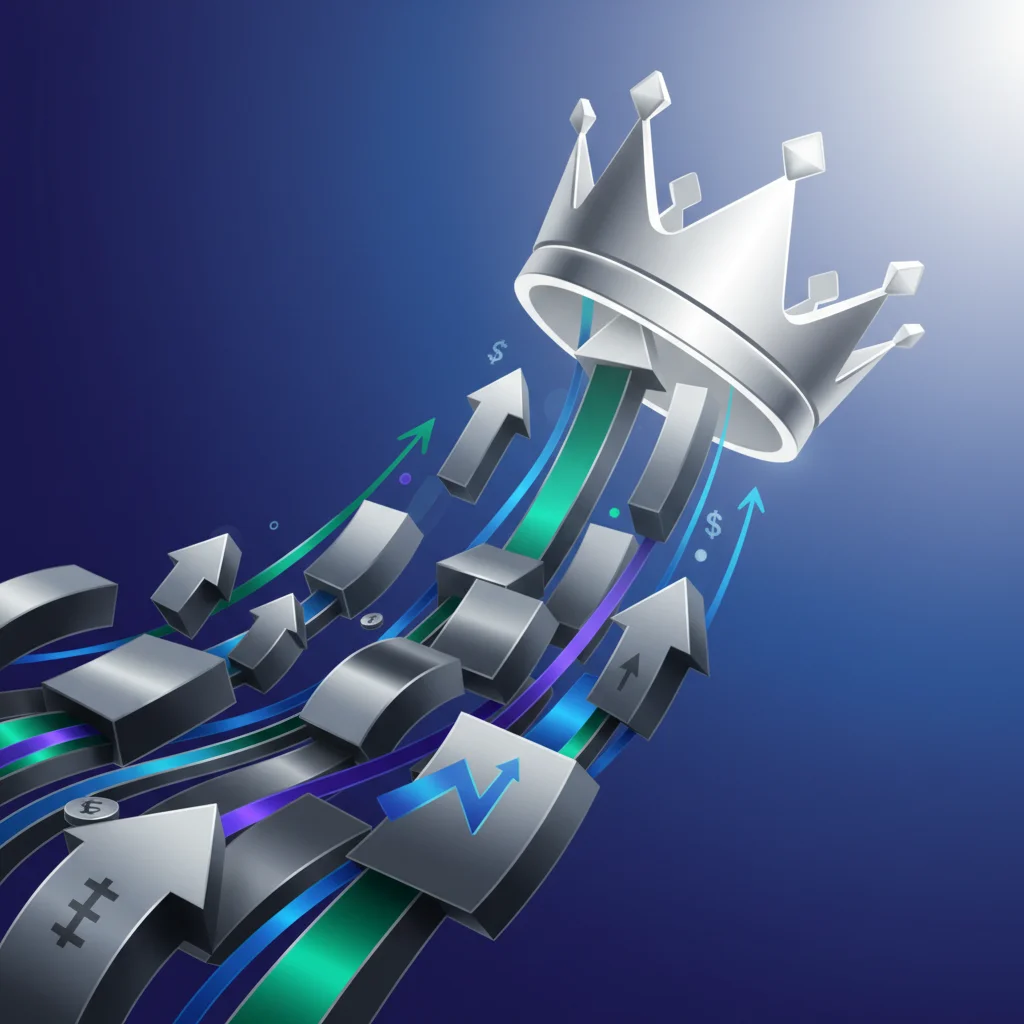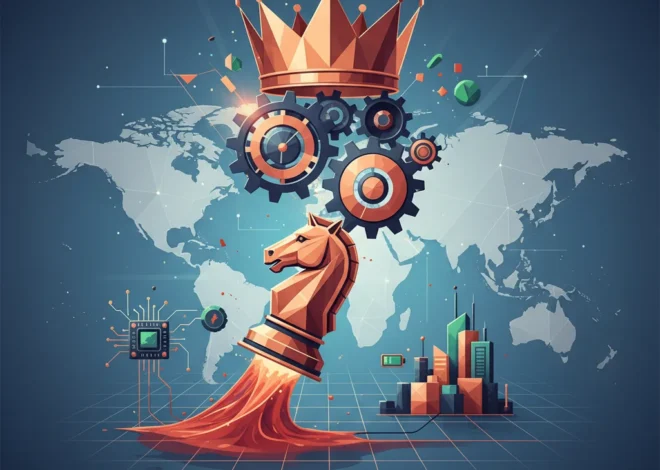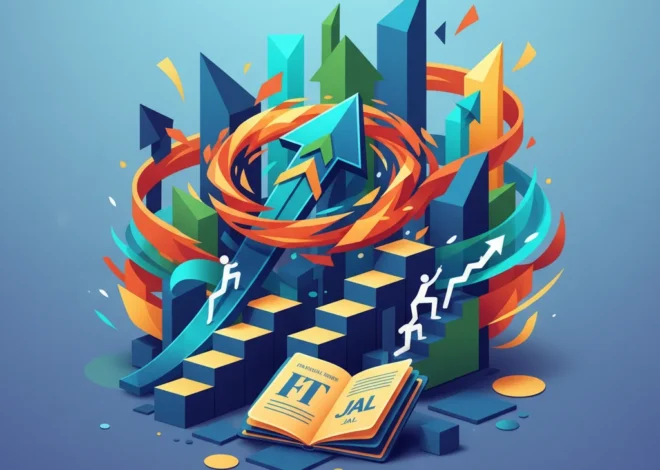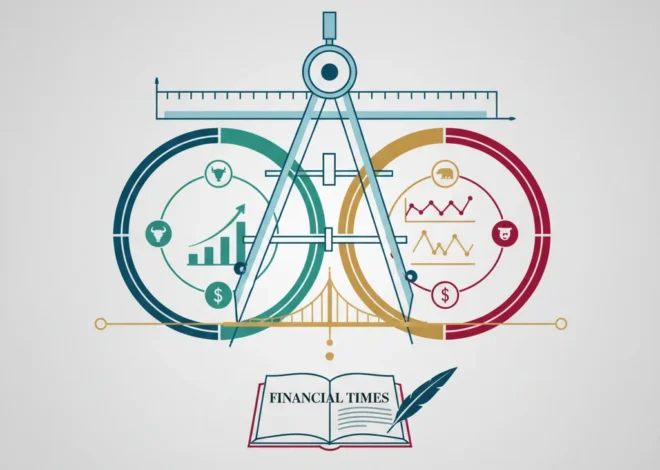
The Silver Surge: Why This “Other” Precious Metal is Reclaiming Its Throne
In the grand theater of the global economy, gold has always played the leading role—the undisputed king of safe-haven assets, the ultimate store of value. But recently, another actor has been stealing the spotlight. Silver, often relegated to the supporting role of “poor man’s gold,” is surging, pushing into record territory and capturing the attention of investors, from seasoned professionals to retail traders entering the stock market for the first time. This isn’t just a simple case of gold’s Midas touch rubbing off; it’s a complex story rooted in thousands of years of monetary history, supercharged by the demands of our technological future.
The recent rally has seen the white metal outpace its more glamorous cousin, fueled by a potent cocktail of geopolitical instability, persistent inflation, and a voracious appetite from both investors and industry. While gold’s demand often spills over, creating a rising tide that lifts all precious metal boats, silver’s current momentum is driven by its own unique and compelling narrative. To truly understand why silver is back in the headlines, we must look beyond the daily trading charts and delve into its dual identity: an ancient monetary metal and an indispensable industrial commodity.
A Tale of Two Metals: Silver’s Historical Significance
For most of human history, silver wasn’t the sidekick; it was the star. From the drachmas of ancient Greece to the Spanish pieces of eight that dominated global trade, silver was the primary medium of exchange. Its name is synonymous with money in dozens of languages (think of the French argent). This deep-seated monetary legacy is encoded in its financial DNA. It acts as a form of insurance, a tangible asset people turn to when faith in fiat currencies or the stability of the banking system wavers.
This history is crucial because it informs investor psychology. When economic turbulence hits, the muscle memory of the market kicks in, seeking shelter in assets with a proven track record. As the Financial Times notes, this spillover from gold is a significant factor, with investors seeking a more affordable but equally tangible hedge against uncertainty (source). However, unlike gold, whose primary modern function is to be a store of value, silver was demonetized over the last century and cast into a new, dynamic role.
China's Mineral Chokehold: A Weapon Against the Global Economy or a Self-Inflicted Wound?
The Industrial Powerhouse: Silver’s Irreplaceable Role in Modern Technology
Herein lies the most critical part of silver’s modern story. It is not just a metal that sits in a vault; it is a metal that works. Silver possesses the highest electrical and thermal conductivity of any element, making it an irreplaceable component in a vast array of modern technologies. This industrial demand creates a fundamental price floor and a powerful driver for growth that gold simply doesn’t have on the same scale.
Consider the global megatrends shaping our future:
- The Green Energy Transition: Every solar panel (photovoltaic cell) uses silver paste to conduct electricity. As the world pivots to renewable energy, the demand for solar panels—and thus silver—is projected to soar.
- Electrification of Vehicles (EVs): An electric vehicle uses significantly more silver than a traditional internal combustion engine car, found in everything from battery packs to complex circuitry and electrical contacts.
- 5G and Connectivity: The rollout of 5G networks and the proliferation of smart devices, from your phone to the Internet of Things (IoT), all rely on silver’s superior conductivity for their components.
This robust industrial demand fundamentally changes the investment calculus. According to market analysis, industrial applications consistently account for around half of silver’s annual demand. This means that unlike gold, which is primarily driven by investment and jewelry demand, silver’s price is also a bet on global economic growth and technological innovation.
To better understand this dual nature, let’s compare the demand drivers for both precious metals.
| Demand Driver | Gold | Silver |
|---|---|---|
| Investment (Bars, Coins, ETFs) | Very High (Primary Driver) | High (Significant, but shares focus) |
| Industrial & Tech Applications | Low (~7-10% of demand) | Very High (~50% of demand) |
| Jewelry & Silverware | High (Major component of demand) | Moderate (Stable but smaller share) |
| Central Bank Purchases | Very High (Key price support) | Negligible |
This table clearly illustrates silver’s unique position. It’s a hybrid asset, straddling the worlds of hard money and high-tech industry. This duality is both its greatest strength and the source of its legendary volatility.
Looking ahead, the rise of financial technology (fintech) and blockchain could be a game-changer. Tokenized silver, allowing for fractional ownership and easier, more secure trading, could democratize access and bring new liquidity to the market. Imagine a future where silver’s industrial use in a new EV is tracked on a blockchain, creating a direct link between technological progress and investment. This convergence of physical demand and digital finance is where the next chapter of silver’s story will likely be written. The key takeaway is that silver is no longer just a monetary relic; it’s a strategic metal for the 21st-century economy.
The Gold-to-Silver Ratio: A Barometer for Market Sentiment
For those involved in commodities investing, the gold-to-silver ratio is a vital, time-honored metric. It simply measures how many ounces of silver it takes to buy one ounce of gold. Historically, this ratio has fluctuated, but it often reverts to a long-term average. When the ratio is high (e.g., 90:1), it suggests that silver is undervalued relative to gold. When it’s low (e.g., 40:1), it suggests silver is overvalued.
In recent years, the ratio has been historically high, leading many analysts to argue that silver was overdue for a significant catch-up rally. The recent price action, where silver has outperformed gold, is a classic example of this ratio beginning to compress. Investors watch this metric closely, as a falling ratio is often a sign of a strong bull market for precious metals, indicating rising risk appetite and a belief in both economic growth (good for industrial silver) and a need for an inflation hedge (good for monetary silver). The current trend shows a clear shift in sentiment, with capital flowing into what is perceived as the more leveraged and higher-upside precious metal (source).
The Perfect Storm: Why Now?
The current surge isn’t happening in a vacuum. It’s the result of several powerful macroeconomic forces converging at once:
- Persistent Inflation: Despite central bank efforts, inflation remains sticky in many parts of the world. This erodes the value of cash and pushes investors toward tangible assets like silver and gold to preserve their purchasing power.
- Geopolitical Instability: Conflicts and rising tensions around the globe enhance the appeal of safe-haven assets that exist outside of any single government’s control or political whims.
- Central Bank Gold Buying: While central banks primarily buy gold, this record-level purchasing puts a strong bid under the entire precious metals complex, creating positive sentiment that benefits silver.
- Supply Constraints: Silver mining output has been relatively flat, and a significant portion of it is a byproduct of mining for other metals like copper and zinc. A structural deficit, where demand outstrips new supply, has been a feature of the market for several years, putting upward pressure on prices.
Beyond the Punchline: What Tim Robinson's 'The Chair Company' Teaches the World of Finance
The Investor’s Takeaway: Silver’s Place in a Modern Portfolio
So, what does this all mean for the modern investor navigating the complexities of today’s finance landscape? Silver presents a unique, albeit volatile, opportunity. It offers a hedge against inflation and crisis, much like gold, but with an added kicker tied to technological and industrial growth.
Its lower price point makes it more accessible for retail investors looking to dip their toes into precious metals. However, its volatility means it requires a strong stomach and a long-term perspective. It may not be the anchor that gold is, but it can be the high-powered engine of a diversified portfolio’s commodity allocation.
The story of silver is a powerful lesson in economics—a tale of an ancient metal finding its footing in a futuristic world. It is a bridge between the old world of monetary value and the new world of high technology. As the global economy continues to navigate uncertainty while simultaneously pushing the boundaries of innovation, silver’s dual identity makes it one of the most fascinating and potentially rewarding assets to watch.


